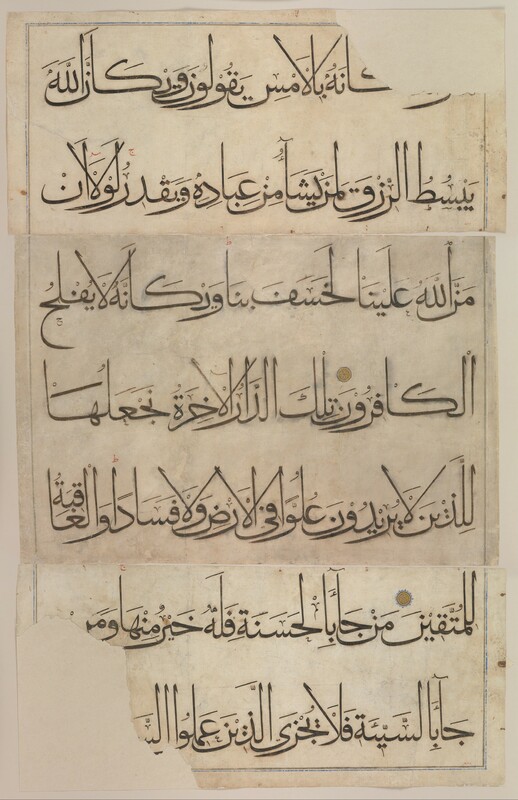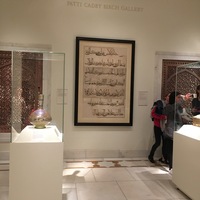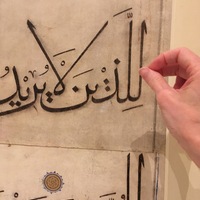Qur'an of 'Umar Aqta'
Type:
Illuminated manuscripts,
Qur'ans
Date:
Late fourteenth to early fifteenth century
Location or Findspot (Modern-Day Country):
Uzbekistan
Medium:
Paper
Dimensions:
Originally over 2 meters tall
Description:
With pages originally over 2 meters (7 feet) tall, the Qur'an of 'Umar Aqta is one of the largest Qur'ans ever produced. The calligrapher 'Umar Aqta' wrote it to impress Timur (or Tamerlane, r. 1370–1405), the Turco-Mongol founder of the Timurid Empire of modern-day Iran and Central Asia. The manuscript survives in fragments across different institutions, with those from the Met, shown here with a hand for scale, used to recreate a full page. It was written with ink, opaque watercolor, and gold on paper.
Relevant Textbook Chapter(s):
10
Repository and Online Resources:
• See more information about this manuscript on the website of the Metropolitan Museum of Art.
• Visit the Schoenberg Institute for Manuscript Studies' website for Islamic Manuscript Basics.
Image Credits:
Metropolitan Museum of Art,
Jill Caskey



